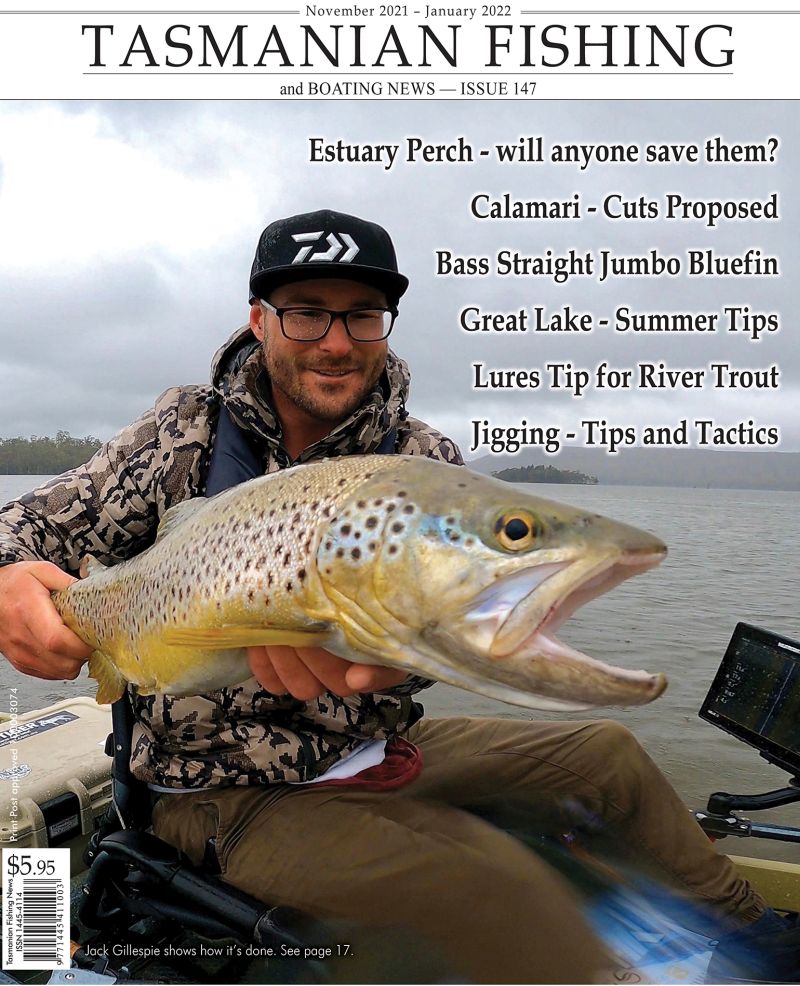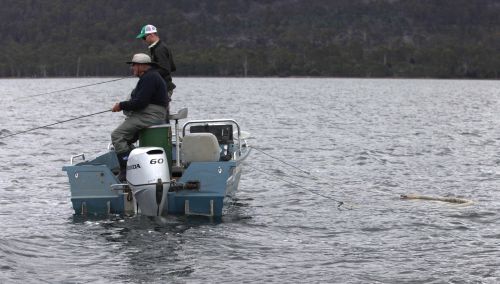Presented from Issue 105, August 2013
Christopher Bassano fishes over 250 days a year. This interview was recorded just before he headed off to fish for Australia in the World Fly Fishing Championships in Norway 14-17 August 2013.
I live on a small stream and at the start of the season I like to go off on a bit of a discovery mission and fish the headwaters of the creeks and rivers I feel an affinity with.
These small rivers include the St Pats, Meander, Forester, Little Forester and others. The further up you go on these rivers the clearer and lower the levels. They are often less affected by the rain and runoff and you get some good opportunities. Get as close to the source as you can and you will find some good dry fly fishing. Don’t limit yourself to those I have mentioned. Most headwaters will hold trout.
I am talking about some pretty small waters here and that means something you can step across up to a couple of metres wide and almost always less than half a metre deep — 200-400mm is probably ideal. The water will be shallow and fish will only need to move a few centimetres. Fish will be sitting on the bottom and will NOT move far to intercept your offering.
Dry fly fishing is possible and is not something many people do in August, but I love it. Fish are less selective at this time and the standard flies for me are Royal Wulffs or something quite visible. You can use a nymph in the deeper depressions and pools to very good effect and the flies I like here are simple. Try Pheasant Tail nymphs with a gold bead, Hares Ear with gold or coloured beads. A bit of colour does seem to appeal to me – and the fish in this cold water.
If you are inclined fishing a Woolly Bugger upstream can be great fun. Keep your casts short and retrieves should be constantly changing – a bit of a jigging motion, dead drift, and then a bit faster than the current. Try flies size 10-12 and even just tea-bag them in holes from the bank with just your leader out of the rod tip. This can be great fun in the slightly bigger holes and back eddies.
If you need a big fish fix — go and fight for a spot at Four Springs. I don’t fish Huntsman or Great Lake at this time as they are open all year and I could fish them in Winter.
Huntsman has fished well over Winter with plenty of small fish around the edges. It is a fall back though if you fish the top of the Meander and aren’t having any luck.
Another water I have had great early season success that is away from the bitter cold of the Highlands is Lake Leake and Tooms – although I don’t fish Tooms much.
If you do decide to head for the hills and fish the Highlands I will give you a few tips there as well. You will do better with a boat. I like water about four to five metres deep. The surface temperature is very cold and the fish will be lurking around the slightly warmer deeper water. It is essential to get your flies down amongst them and fish them slowly — very slowly. Deep and slow is the key.
The exception here is Penstock as it is shallow and fish don’t get the chance to move to deeper water, but you still want to be fishing near the bottom and once again very slowly.
I don’t fish the edges much at this time. There may be an occasional fish, but it is not a prime area to target in the Highlands. Some of the lower lakes can be okay around the edges though.
Technique
The key to success is technique. Chuck and chance that some anglers employ is like gambling — sometime you might win – mostly you won’t.
Fish deep and slow;
Deep and slow;
Deep and slow;
Repeat it one hundred times to yourself. Keep in touch with your flies the whole time your flies are in the water. To me it is extraordinary how often a fish will take your fly ‘on the drop’ and most angler will never know, or they just might feel a slight take. To me this is a lost fish and lost opportunity.
Fish the hang.
Don’t know what that means? It is fishing the flies right up until they reach the boat and then letting them hang there — often quite vertically from your rod tip. If a fish has been following it will regularly find the hanging fly irresistible. It is a pretty cool thing to see – and feel as the rod bends.
Bulky, dark flies for early season. Flies that push some water with bulky wings or bodies seem to work better for me in cold water. Also flies with plenty of movement such as Zonkers etc are good. Dark flies with a splash of colour are good. Black is great, but throw in some sparkle or bright orange. Particular flies don’t worry me too much though and it is a lot of personal preference.
Find the weed beds. This is important and combine it with deep and slow and you will catch fish.
Fly lines are important. Shallow water of a couple of metres I would fish a type three or five (three to five inches a second sink rate) — deeper water of say three to five metres I would go with a type five to seven or even eight with a slightly shorter leader. This also depends on drift speed if fishing from a boat.
Best Highland lakes.
Okay if you must chase the bigger fish in the Highlands then Penstock, Little Pine and maybe Bronte if it is rising. Bronte is about 400 metres lower than Great Lake so it is a little warmer and fish do get in the shallows so that is a good option for shore based anglers. A black Woolly Worm or Fur Fly is a good fly here.
Arthurs is always an unknown, because at times it can surprise or disappoint. Deeper water as I said is the key, along with finding the weed beds. It can take a lot of searching to find fish, but then it can really turn it on.
Woods can also be great, but as a guide I tend to keep away from the most popular waters. Same as Arthurs — find the weed beds in deeper water and fish your flies slowly over them.
Searun trout
This is something I really love and in Tasmania there are plenty of opportunities. Most anglers don’t take advantage of this and it can be wonderful sport.
I am only going to touch on it here quickly. Check out issue 82 of TFBN for more or search it on www.tasfish.com for more.
The Derwent is probably the best early water and the pick for me in August. It is long and has a lot of good water.
The next water for me is the Huon and this tends to fire up later and mid-September to late October will see me there. Waters further south such as Lune, Catamaran, Esperance etc are similar to the Huon as far as timing goes.
The best places I have found on the Derwent are around the Bridgewater area — up to the Lime Kilns - above Granton/Bridgewater and it is always worth a run up to Boyer.
Shore based anglers can find good sport from Cornelian Bay up. Flies I like are BMS or similar and olive is my favourite colour. Don’t have flies that are too bulky. The most important thig though is fast accurate casting and getting the fly in front of the fish quickly as soon as you see a fish attacking the bait.
In general for this type of fishing from the shore — to fish I can see, I use a floating line. It is easier to pick up and deliver it quickly. From a boat I prefer a sink tip line as this will often get a bit deeper and from my experience you will find some bigger fish this way. And from a boat you are higher up so picking up you line is a little easier. But, in a boat I also have the luxury of having space for more than one rod, so I will also have a floating line rigged and ready as well.
Christopher Bassano




